
"He hath exalted the humble"
people were
drawn towards her
even little children
found it a joy
to look at her
it isn't just talk
it's not merely the face of a Christian
it's a real saint's face
"As soon as she was dead," stated Sister Bernard Dalias, "Bernadette's face became young and peaceful again, with a look of purity and blessedness." The infirmariansclothed her in her religious habit. "We had no difficulty in doing so," observed Sister de Vigouroux, "for her body was supple even though she had been dead for two hours." Moreover, it remained like that until the funeral. All the nuns in the Mother House came in turn on that evening of Wednesday, April 16th, to prayaround the bed on which was laid out. About eleven o'clock on the following day the body was brought down to the chapel. There it lay in state in a temporary coffin surrounded with white draperies and lilies. There was a crown of white roses over her black veil and her beads were entwined around her clasped hands, with her crucifix and the formula of her Perpetual Vows between her fingers. Bernadette appeared to be sleeping."I was in a position to vouch for the speed with which the news of her death spread through the whole town and the sensation it caused among the people," said Father Raffin. In Nevers, and well beyond Nevers, there was but one cry in religious houses and Catholic homes: "She's gone to see the Blessed Virgin again in Heaven!" In spite of continuous rain large crowds set out for Saint-Gildard. "It seemed," remarked Mother Forestier, "as if all this multitude wanted to make up for not having been able to approach Bernadette during her life." Among the number, observed a lady of the town, "were many indifferent Catholics and even unbelievers", yet there was no commotion or disorder. And far from feeling any apprehension, people were "drawn towards her. Even little children found it a joy to look at her". "It isn't just talk," said a homely woman on coming out of the chapel, "it's not merely the face of a Christian, it's a real saint's face."
For the whole of the two days that the body remained lying in state, the main doors of the chapel were kept "open as on Holy Thursday", when every one is allowed to go in and pray before the Altar of Repose. Four Sisters were kept busy the whole time touching the corpse with the pious objects handed to them. After those two days, it is said, there was not a single medal, cross or rosary left in the shops of Nevers.... Working men and women were seen handing up their tools or their scissors and thimbles to be touched against Bernadette's hands. Several of the garrison officers laid the hilt of their swords on them and remained a long time afterward in prayer, withdrawing to the back of the chapel so as not to hinder the crowd from approaching. The funeral was at first fixed for Friday, April 18th, but it had to be deferred a day because, notwithstanding the efficient arrangements, there were still too many people who had not yet been able to get into the chapel. Early on a lovely morning (Saturday the 19th) the public began to invade the courtyards of the Mother House and the adjoining streets. At the railway station in Nevers the number of travellers alighting from the trains astonished everyone. "What's happening?" they asked. "It's the funeral of the little saint of Lourdes," was the reply.
At ten o'clock the Requiem Mass began, celebrated by Canon Greuzard, Administrator of the Cathedral. The two Perreau brothers directed the music. Bishop Lelong, who had interrupted his round of Confirmation visits to assist at the funeral, was presiding, supported by his Vicars General. The members of the Cathedral Chapter occupied the choir stalls and had in their midst Father Sempé, Superior of the Grotto Chaplains, and Abbé Pomian, Bernadette's former confessor. None of her relations had been able to come. Together with the professors and students from the Senior Seminary, eighty priests and religious filled the side-chapels. The nuns of the Congregation, with representatives from the Sisters of the Holy Family, the Sisters of Hope and the Little Sisters of the Poor, occupied the whole of the large nave. In the transept were eminent people of the town and representatives of the leading families. In the first row of laity knelt the author of the book, Notre-Dame de Lourdes, M. Henri Lasserre. Before giving the Absolution, Bishop Lelong, vested in pontificals, delivered an extempore panegyric whose words still stir the emotions. He extolled the "work of God" in the humble virginal life of Bernadette and in the marvels of Lourdes, which were the consequence of her faithful witness.
"By a unique exception," stated Mother Forestier, "Sister Marie-Bernard was not buried in the town cemetery were even Superiors General were usually buried." Mother Dons, led by a presentiment, insisted on keeping her within the convent walls, "on account of the great favours she had received and also on account of the holiness of her life". Accordingly she had a vault constructed in the secluded oratory which had been erected twenty years before in the midst of the vines, and dedicated to St Joseph. In order to enable everyone to see the sweet face of "her who had seen the Blessed Virgin", the coffin was carried still open to the place of burial. One might have truly thought that Bernadette was only drowsing: her beautiful eyes had opened slightly, and her hands and nails were life-like in colour. At that moment "an immense crowd filled the courtyards, the terrace and the garden as far as St Joseph's chapel". It was more of a triumph than a scene of mourning. In accordance with a touching customer at Saint-Gildard, the Absolution was followed by the Salve Regina. Thus by the grave of her privileged child the final act of homage was paid in fitting recognition to the merciful and compassionate Queen of Heaven. When, about two o'clock, it was necessary to start sealing the coffin -- a casket of lead encased in oak -- "the throng of people was so great that the Police Commissioner had to be summoned to keep back the crowd." The only ones present in the chapel were Father Sempé, MM Pomian, Febvre and Lasserre, the Superior General, the Assistants, a few Sisters, the Commissioner and two constables, in addition to the undertakers. While the latter were attending to their mournful task, the bystanders recited alternately the five decades of the Rosary. On the invitation of the chaplain, Father Sempé announced each of the mysteries -- the Glorious Mysteries -- and commented briefly on them in relation to the present occasion. On Ascension Day, May 22nd, 1879, Sister Marie-Bernard was finally buried in the chapel of St Joseph. From that day onwards the Mothers General, with the full approval of the Bishops of Nevers, never refused anyone permission to go and pray there. Year by year the number of visitors was to go on increasing. They came from every rank of society and from every point in Christendom. Even if the nuns did nothing to stop these crowds, they did nothing, either, to encourage them. Moreover they resolutely kept away from the tomb anything that might look like a public cult. At most they had to agree to giving certain persons who asked for them souvenir pictures bearing a small portion of Bernadette's linen or clothing. Soon letters began to reach Saint-Gildard from all quarters reporting remarkable favours, astounding cures and conversions attributed to the intercession of the "little Saint". Many correspondents expressed their desire that the Blessed Virgin's confidante should be raised to the honours of the altar. The "voice of the people" was in fact going to become the "voice of God".
Thirty years went by, and it was no longer the order of the day to keep Bernadette in the depths of obscurity. The witnesses of her life were never-ending in their praises of her; and Mother Vauzou was no longer there to hold her down. After succeeding Mother Dons in January 1881, Mother Vauzou was re-elected Superior General five times, and was at the helm eighteen years in all, having the great happiness of seeing her Congregation finally approved by the Holy See. Having struggled step by step with indomitable courage against the persecution laws, she was obliged, in May 1899, to resign her high office, worn out by her labours. At first she retired to St Anne's Retreat at Neuilly, then, in August 1901, by a singular act of Providence, she set out for ... the land of Bernadette. Her last home was to be the Orphanage of Mary Immaculate, from which there is a splendid view of the grotto and the basilicas. There she was, condemned to long periods of confinement in her room. "Tell the good God that he has certainly put me under detention," she said to her Sisters with a faint smile, "but I bear Him no grudge for it." Nevertheless, she was not yet entirely reconciled. "Sometimes, when she saw the demonstrations of the crowds at the grotto, it set her nerves on edge, and she would abruptly close the shutters of her room." She was "tormented by mental anguish", but little by little the charm of Lourdes had its effect on her soul. "One of her last consolations," as her obituary notice disclosed, "was to feel her love increasing for Bernadette's heavenly Lady." After celebrating in the homely surroundings of the Orphanage the diamond jubilee of her religious profession, on June 11th, 1906, she died in her eighty-second year on February 15th, 1907, "after imploring Our Lady of Lourdes to protect her in her agony." Some months earlier Mother Forestier had paid her a visit on her way back from the Eternal City. "I told her," reported the Superior General, "that they have spoken to me in Rome about the possibility of having Bernadette's cause introduced. She answered: "Wait till I am dead." Sister Paschal indeed affirmed: "From what I have heard say, Mother Marie-Thérèse Vauzou is supposed to have stated that she would have turned devil's advocate for the Cause of Canonization ... Which I take to means that she would have put a spoke in the wheel!" Would she have dared to do so, considering how greatly her former novice's reputation for sanctity had increased? Be that as it may, she was recalled to God at the very moment when the initial proceedings were being taken, but -- astonishing as it may seem -- it was to her who had died but the day before that Mother Forestier prayed to procure the Holy See's consent to petitions which she would have rejected had she been still alive. On the 16th or 17th of February, 1907, in the presence of her moral remains in Lourdes [discloses the Superior General], I made the following prayer: "Mother, things do not always look the same in Heaven as they do on earth. Now that you are, I trust, illuminated by the pure light above, be so good as to take Bernadette's cause in hand. I leave the initiative in this matter to you. I shall not take any steps myself. I shall wait for a sign from Heaven." I confided this to my two travelling companions, Mother Fabre, Assistant, and Mother Bordenave, Secretary General, and we prayed about it. On March 5th I received a letter from Bishop Gauthey of Nevers, written from Rome, in which I believed was the sign I requested. He did not know of my prayer, and he wrote: "Cardinal Vivès has strongly urged me to prepare Bernadette's cause. He says the evidence must be collected without delay from all those that knew her. Extraordinary deeds are not required; it is the practice of virtue that must be brought out clearly. I believe it is our duty, and I looked upon the words of this saintly Cardinal as an invitation from Providence." It is permissible to think with Mother Forestier that there was more than mere coincidence here, and that the late Mother Vauzou, having rid herself of her earthly misconceptions, was hastening to make amends for them to God. So now we see contact established between Rome and Nevers. The Holy See wished to be enlightened on the primary question: should the Cause of Sister Marie-Bernard be taken up? On August 20th, 1908, in the chapel of Saint-Gildard, in the presence of more than two hundred nuns assembled for the annual Retreat, was formally constituted, under the efficient presidency of Bishop Gauthey, the ecclesiastical court which was to conduct the first enquiry, known as the Informative Process, concerning the life, virtues, reputation for sanctity and miracles of the servant of God. Before closing the initial session at which Bernadette's cause had just been opened, the Bishop of Nevers pointed out the propitious circumstances: it was the Feast of St Bernard; it was the jubilee year of the Apparitions....One hundred and thirty-two sessions were to follow, in the course of which appeared the survivors of the Soubirous family, a number of clergy, nuns and layfolk who had known Bernadette well. The Ecclesiastical Commission displayed prodigious activity, for by October 23rd, 1909, the Congregation for Rites was in possession of all the documents of the Enquiry. At Nevers, the previous September 22nd, before finally closing the Informative Process, Bishop Gauthey had ordered proceedings to be taken, in due canonical form, for the exhumation of the body of Sister Marie-Bernard. In St Joseph's chapel there was profound emotion when the "confidante of the Immaculate," after being buried for thirty years and five months, was again brought into the light of day. There was no trace of corruption. The flesh was parched but intact, and it had preserved its whiteness. Her head, which was covered in the cap and veil, and her hands, which were crossed over her heart, holding the tarnished crucifix and the rosary corroded with rust, were slightly inclined to the left. Her eyes, deeply sunk in their sockets, were found to be completely closed. Her lips were partially open, as in a smile.... The touching attitude of the little dead body, as Bishop Gauthey remarked, recalled that of the young virgins in the first centuries discovered in the catacombs. On August 13th, 1913, Pope Pius X signed the decree for the introduction of the Cause. By that very fact Bernadette received the title of Venerable. Then was to follow under the authority of Cardinal Vico the "Apostolic Process" concerning her reputation for sanctity, her virtues and miracles. Delayed by the war, this did not open until September 17th, 1917, and was presided over by Bishop Chatelus, successor to Bishop Gauthey, who had no become Archbishop of Besançon. Two hundred and three sessions were required. At length, on February 11th, 1920, the resulting documents were lodged with the Congregation of Rites. On November 18th, 1923, in the Ducal Hall, before the whole French colony of Rome, Pope Pius XI published the "Decree on the heroic nature of the virtues of the Venerable Sister Marie-Bernard Soubirous". In his reply to the discourse of Bishop Chatelus, the Pope insisted on expressing his own thoughts about Bernadette's sanctity. There is no doubt that we are here in the presence of sanctity in the precise and exact meaning of the word.... In fact, when one considers Bernadette's life such as it appears at every stage of the Processes, which have been lengthy, careful, considered and strict, as they should always be, we are pleased to say, for the greater glory of God, this life can be summed up in three words: Bernadette was faithful to her mission, she was humble in glory, she was valiant under trial. Meanwhile the Congregation for Rites was examining the authenticity of the miracles put forward for the Beatification. From some ten of them it had selected two cases of cures which had been meticulously checked by the doctors. A youth of seventeen, Henri Boisselet, attacked in November, 1913, by tubercular peritonitis, had received the Last Sacraments. A novena to Bernadette was begun, for him and with him, and was due to end on December 8th. On that very day he was instantaneously and completely cured. Passed as fit for military service during the 1914-1918 war, he was drafted to the front, where he was later taken prisoner. After thirty-two months of captivity in Germany, he returned home still in sound health. Sister Marie-Mélanie Meyer, of the Sisters of Providence of Ribeauvillé, was infirmarian in the Sacred Heart Convent in Moulins. In 1910, when she was thirty years of age, acute pains and frequent vomiting revealed a gastric ulcer. Soon she became incapable of taking any nourishment, was reduced to extreme weakness and near to death. She vowed a pilgrimage to Bernadette's tomb. On the journey from Moulins to Nevers she suffered intense pain. Once in the little chapel of St Joseph she summoned up strength to prostrate herself on the tombstone and then to remain there in prayer, now on her knees, now seated, for an hour. Suddenly her pains disappeared. Seized with a violent hunger she took a meal without any difficulty. She felt her strength returning already, and the return journey to Moulins was accomplished without fatigue or suffering. The next day Sister Marie-Mélanie returned to normal life and resumed her post. The doctors' certificates and the witnesses' statements were examined by the Congregation of Rites in three sessions. On May 1st, 1925, the Holy Father was present at the solemn reading of the Decree in which he acknowledged the genuineness and validity of the two miracles for the Cause. From that moment the Beatification of Bernadette was assured. On June 2nd, in the Consistorial Hall, His Holiness declared by Apostolic Decree that she could in all security be proclaimed Blessed. On hearing this good news, how many in Christendom must have reflected that, through the voice of her august Head, the Catholic Church had just officially acknowledged the fulfilment of Our Lady's promise: "I will make you happy in the next world." On the morning of Sunday, June 14th, during the Octave of Corpus Christi, St Peter's in Rome was a thrilling blaze of light and rejoicing. Beneath its gilded vaults and dome stood the Superior General, the Reverend Mother Bordenave, with a large number of her nuns, and an immense gathering people. After Cardinal Merry del Val, Archpriest of the Vatican Basilica and former Secretary of State to Pius X, had had the Brief of Beatification read, applause broke out everywhere. Then the soaring chant of the Te Deum began, the bells of St Peter's rang out, and the veil fell from "Bernini's Glory": in this unique setting the visionary of Lourdes was portrayed borne aloft by angels towards the outstretched arms of the Immaculate Virgin. Henceforward, Bernadette, honoured as Blessed, would have her own liturgical feast and her own office, wherever Rome allowed it. The earthly representative of God, who "exalts the humble", reserved to himself, so to speak, the inauguration of this public cult in honour of the little Soubirous girl. On the evening of the Beatification, His Holiness was carried in the gestatorial chair into St Peter's, while fifty thousand voices acclaimed him. Kneeling in the centre of the choir, Pius XI lifted his eyes to "Bernini's Glory" and then meditated devoutly. While he was still deep in prayer, someone started to walk towards him: it was the youngest of Bernadette's brothers, Pierre Soubirous, coming to present the Head of the Church a relic, in a sumptuous monstrance, of his godmother, now "Blessed". The following August 3rd, amid splendours worthy of a queen, the mortal remains of Bernadette were laid in the place befitting them, in the choir of the main chapel of Saint-Gildard, enclosed in a casket of gilded bronze and crystal whose chasing and enamels summarized her life and symbolized her soul.
Once this stately reliquary was put on view, it became clear that the Soubirous girl, this humble star, had not altogether eclipsed in the radiance of the "Woman clothed with the sun". More and more people began to come to pray to her: individual pilgrims, parish groups and diocesan pilgrimages. Lourdes also was far from neglecting its purest glory. Her statues multiplied in the town and in the Grotto domain; her poor "dungeon" became an oratory. On August 21st, 1927, Bishop Schoepfer blessed a magnificent altar in her honour beneath one of the arches of the Rosary Esplanade. Even the hills of Bartrès, where the enchanting memory of her still lived, were becoming a place of pilgrimage. God was soon to show by fresh wonders that it was His good pleasure that she also should be prayed to. And that would be the completion of her Cause. Two instantaneous cures, certified subsequently as complete and permanent, were submitted to the Congregation of Rites. Scarcely forty days after the Beatification, an illustrious native of Nevers, His Grace Archbishop Lemaître of Carthage, left Paris for Saint-Gildard, where he was to attend the solemn translation of the Reliquary on August 3rd. The missionary Archbishop "had been suffering for over ten years from a grave amoebic infection which had attacked him in the tropical countries where he had been working zealously as Vicar Apostolic. Several different treatments had been tried, but in vain; the disease was so far advanced as to leave, in the opinion of the doctors, no hope of a cure, or at any rate no hope of an instantaneous cure." During the journey, "he had a severe attack of the same illness". However, he found sufficient strength to attend the ceremony of translation, "and was completely cured there and then." The prelate resumed his arduous ministry in Carthage and was able to "display therein the same extraordinary activity as before". The second miraculous cure attributed to the intercession of Blessed Bernadette occurred two and a half years later, not at Nevers but in Lourdes. Sister Marie de Saint-Fidèle, a Good Shepherd nun, after having endured many other illnesses, was afflicted with a tumour on the knee and with dorso-lumbar Potts' disease. The disease had "progressed so far that the doctor declared a cure impossible by natural means except perhaps after a long period of time.... As the condition of the invalid was growing worse, a novena of prayers was made to Blessed Bernadette. On the fifth day of this novena, namely February 6th, 1928, at 6.00 pm, Sister Marie felt herself suddenly cured. Next morning she left her bed.... After a lapse of three years, medical specialists who subjected her to a thorough examination found no trace of the disease from which she had been suffering." On Wednesday, May 31st, 1933, the Decree of Approbation of the Miracles was read in the Vatican Palace in the presence of the Holy Father. On Sunday, July 2nd, on the Feast of Our Lady's Visitation, the Decree De Tuto was published. It was the final act in a Process which had begun twenty-five years before. Then, on Friday, December 8th, 1933 -- the Feast of the Immaculate Conception -- the Catholic Church lavished its splendours on little Bernadette. The great Basilica of St Peter in Rome threw open its doors, and there, radiantly happy and proud, were her family of birth and her family by grace. The widow of her brother, Jean-Marie; her nephews Pierre, François and Bernard, and other members of the Soubirous family, made their way to the Tribune of the Postulation with the Very Reverend Mother Crapard, Superior General of the Sisters of Charity of Nevers, and hundred and sixty of her nuns. Ten thousand pilgrims had come from France, and about forty thousand people filled the naves when, towards 8:15 am, Pope Pius XI appeared, carried aloft in the gestatorial chair. He was preceded by a long procession in which walked eighteen Cardinals, eight-five Patriarchs, Primates, Archishops and Bishops. Among them, and immediately recognisable by his tall stature and his missionary's beard, was Archbishop Lemaître, Primate of Africa, whose portrait also could be seen on one of the two banners hanging from the loggias of the cupola. And among the prelates could be seen Bishop Flynn of Nevers, and Bishop Gerlier of Tarbes and Lourdes.
The silver trumpets sounded. Then, to the singing of the liturgical hymns were added the swelling voices of the multitude cheering the Pontiff as he came forward giving his blessing, and cheering banner of the Saint-to-be. After the triple petition to the Consistorial Advocate and the chanting of the Litany of Saints and the Veni Creator, the whole assembly rose and there was an impressive silence. Seated on the Chair of the Apostle and with the mitre on his head, Pope Pius XI, Bishop and Teacher of the Universal Church, pronounced the formula of Canonization, in his warm resonant voice that vibrated with a certain tenderness as he reached the final words: "To the honour of the Most Holy and Indivisible Trinity, for the exaltation of the Catholic Faith and for the spread of the Christian Religion, by the authority of Our Lord Jesus Christ, of the Blessed Apostles Peter and Paul and by Our own, after mature deliberation and having often implored the Divine assistance, on the advice of Our venerable brethren the Cardinals of the Holy Roman Church, the Patriarchs, Archbishops and Bishops, We define and declare the Blessed Marie-Bernard Soubirous a Saint, and we enrol her in the catalogue of Saints, ordaining that her memory shall be piously celebrated in the Universal Church on April 16th of each year, the day of her birth in Heaven. In the name of the Father, and of the Son, and of the Holy Ghost." The hymn of triumph burst forth: Te Deum laudamus. At the same moment the great bell of St Peter's rang out, and with it every bell in the Eternal City. When, about one o'clock in the afternoon, after his Solemn High Mass, the Pope, wearing the tiara, the mark of his royalty, returned once more through the Basilica in his chair, the noise of the ovations drowned the fanfares of the silver trumpets..... Then spontaneously the massive crowd began to sing the Ave Maria, just as at Massabielle. In his homily after the Gospel of his Mass, Pope Pius XI had stressed the humility of this "ignorant girl, a simple miller's daughter, who possessed no other wealth than the candour of her exquisite soul"; an authentic Saint, nevertheless, whose message, after the revelations of the Queen of Heaven and her exhortations of penance, procured for the world the magnificent spectacle of Lourdes, its three sanctuaries, its pilgrimages, its graces of conversion, of calls to perfection, and of miraculous cures....On this day of her supreme glorification, God was exalting His little servant. Truly -- and this is the great lesson of St Bernadette's life -- God exalts none but the humble.
This is the final chapter of "Saint Bernadette Soubirous" by Abbé François Trochu (published by Tan Books).




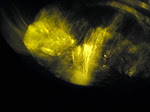



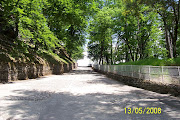




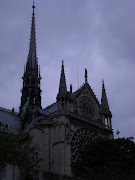

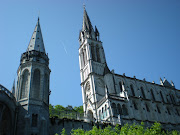
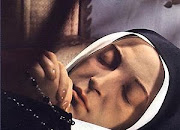

.jpg)

No comments:
Post a Comment